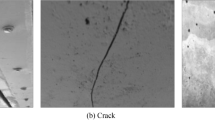Abstract
The bridge identification method in the high-resolution remote sensing image is realized by using the characteristics of the bridge. Now, due to the continuous leap forward in sensing technology, the data volume of remote sensing images has increased substantially, and the resolution of remote sensing images has also been continuously improved. People are paying more and more attention to the automatic recognition and positioning of bridges in remote sensing images. Automatic bridge recognition technology can automatically extract bridge signs from the complex background of earth observation images through high-speed real-time information processing based on specific regions and various input function template databases and detect, intercept, identify, and track targets. By using the characteristics of typical targets or image edges, grayscale, texture structure meaning, and regional shape, satellite remote sensing images have the advantage of being able to provide surface information at a high speed. However, in special cases such as low resolution (medium and low), the acquisition and measurement of GIS information cannot play a good role. In order to provide a reliable guarantee for mapping and map updates, it is necessary to develop high-resolution satellite remote sensing images. Use remote sensing images with high spatial resolution as the data source, and use a rule-based object-oriented method to correctly extract bridge targets from high-resolution images. First, through multi-scale scoring experiments, combined with the characteristics of the bridge, select the best segmentation ratio. Second, the rule set is established using the water index and threshold function method, and the vector files of the water area and the bridge are gradually obtained. Finally, the bridge target can be obtained normally through binarization, mathematical shape processing, overlay analysis, and other methods.











Similar content being viewed by others
Change history
22 November 2021
This article has been retracted. Please see the Retraction Notice for more detail: https://doi.org/10.1007/s12517-021-09047-2
28 September 2021
An Editorial Expression of Concern to this paper has been published: https://doi.org/10.1007/s12517-021-08470-9
References
Kreyszig E (1979) Advanced engineering mathematics. John Wiley and Sons, Inc., New York
Mailapalli DR, Wallender WW, Raghuwanshi NS, Singh R (2008) Quick method for estimating furrow infiltration. J Irrig Drain Eng 134(6):788–795
Mailhol JC, Baqri M, Lachhab M (1997) Operative irrigation modelling for real-time applications on closed-end furrows. Irrigation Drainage Sys 11:347–366
McClymont DJ, Smith RJ (1996) Infiltration parameters from optimization on furrow irrigation advance data. Irrig Sci 17(1):15–22
Merriam JL (1977) Efficient irrigation. California Polytechnic and State University. San Luis Obisgo, California
Merriam JL, Keller J (1978) Farm irrigation system evaluation: a guide for management. Dept. of Agric. and Irrig. Eng., Utah State Univ., Logan, Utah
National Engineering Handbook (1974) Border irrigation. In: USA Soil Conservation Service (SCS). DC, Washington chap 4
Nie W, Fei L, Ma X (2012) Estimated infiltration parameters and Manning roughness in border irrigation. Irrig Drain 61(2):231–239
Philip JR (1957) The theory of infiltration: 3. Moisture profiles and relation to experiment. Soil Sci 84(2):163–178
Scaloppi EJ, Merkley GP, Willardson LS (1995) Intake parameters from advance and wetting phases of surface irrigation. J Irrig Drain Eng 121(1):57–70
Serralheiro RP (1995) Furrow irrigation advance and infiltration equations for a Mediterranean soil. J Agric Eng Res 62:117–126
Seyedzadeh A, Panahi A, Maroufpoor E, Singh VP, Maheshwari B (2020a) Developing a novel method for estimating parameters of Kostiakov–Lewis infiltration equation. Irrig Sci 38(2):189–198
Seyedzadeh A, Panahi A, Maroufpoor E (2020b) A new analytical method for derivation of infiltration parameters. Irrig Sci 38:449–460. https://doi.org/10.1007/s00271-020-00686-z
Shepard JS, Wallender WW, Hopmans JW (1993) One-point method for estimating furrow infiltration. Trans ASAE 36(2):395–404
Singh VP, Ram RS (1983) A kinematic model for surface irrigation: verification by experimental data. Water Resour Res 19(6):1599–1612
Strelkoff TS, Clemmens AJ, El-Ansary M, Awad M (1999) Surface-irrigation evaluation models: application to level basins in Egypt. Trans ASAE 42(4):1027–1036
Upadhyaya SK, Raghuwanshi NS (1999) Semiempirical infiltration equations for furrow irrigation systems. J Irrig Drain Eng 125(4):173–178
US Department of Agriculture, Natural Resources and Conservation Service (1974) National Engineeri Handbook. In: Section 15. National Technical Information Service, Washington, DC, Border Irrigation Chapter 4
Valiantzas JD, Aggelides S, Sassalou A (2001) Furrow infiltration estimation from time to a single advance point. Agric Water Manag 52:17–32
Vatankhah AR, Ebrahimian H, Bijankhan M (2010) Discussion of “Quick method for estimating furrow infiltration” by Mailapalli DR, Wallender WW, Raghuwanshi NS, Singh R. J Irrig Drain Eng 136(1):73–75
Walker WR (1989) SIRMOD a model of surface irrigation. Utah State University, Logan
Walker WR (2005) Multilevel calibration of furrow infiltration and roughness. J Irrig Drain Eng 131(2):129–136
Walker WR, Busman JD (1990) Real-time estimation of furrow infiltration. J Irrig Drain Eng 116(3):299–318
Funding
Supported by the Research Foundation of Education Bureau of Hunan Province, China (Grant No. 20B127), and the Guizhou Science and Technology support plan project (Grant No. 2021-330) and the construct program of applied specialty disciplines in Hunan province (Hunan Institute of Engineering)
Author information
Authors and Affiliations
Corresponding author
Ethics declarations
Conflict of interest
The authors declare that they have no competing interests.
Additional information
Responsible Editor: Hoshang Kolivand
This article is part of the Topical Collection on Smart agriculture and geo-informatics
This article has been retracted. Please see the retraction notice for more detail:https://doi.org/10.1007/s12517-021-09047-2
About this article
Cite this article
Liu, Z., Wu, X. RETRACTED ARTICLE: Mountain bridge design based on remote sensing images. Arab J Geosci 14, 1421 (2021). https://doi.org/10.1007/s12517-021-07746-4
Received:
Accepted:
Published:
DOI: https://doi.org/10.1007/s12517-021-07746-4




